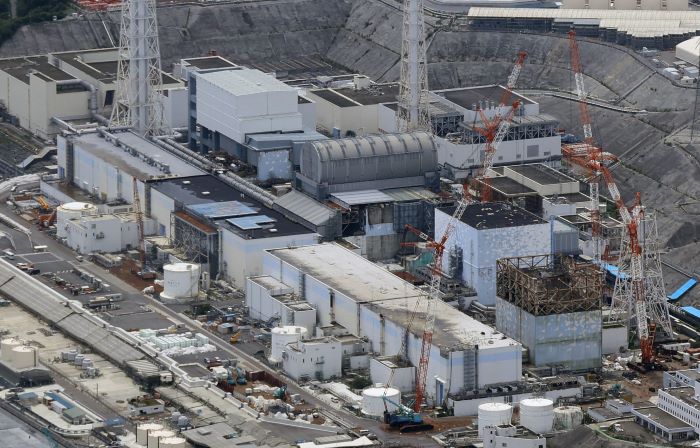
The Tokyo Electric Power Company (TEPCO) announced a leak of 5.5 tons of contaminated water from a purification system within the Fukushima Daiichi Nuclear Power Plant on February 7. (Image courtesy of Yonhap)
TOKYO, Feb. 8 (Korea Bizwire) – The Asahi Shimbun reported that the Tokyo Electric Power Company (TEPCO) announced a leak of 5.5 tons of contaminated water from a purification system within the Fukushima Daiichi Nuclear Power Plant on February 7.
According to the report, at around 8:55 a.m. on the same day, a worker discovered the contaminated water leaking from an exhaust vent located on the exterior wall of the high-temperature incinerator building within the plant.
This vent is used to expel hydrogen generated by the contaminated water purification system out of the building.
At the time of the incident, the purification system was shut down, and workers were in the process of flushing the pipes with regular water to clean them in preparation for inspection.
It is believed that a valve, which should have been closed, was mistakenly left open, causing the remaining contaminated water and the cleaning water in the pipes to mix and flow out through the vent.
There is a possibility that the leaked contaminated water has seeped into the soil outside the building, and TEPCO plans to collect this soil in the future.
TEPCO estimated the total amount of leaked contaminated water at 5.5 tons and the total amount of radioactive materials leaked at 22 billion becquerels, while stating that there has been no impact outside the plant site.
The Asahi Shimbun noted, “No significant changes were observed in the concentration of radioactive materials in the drainage closest to the site, and no impact on the outside environment, such as leakage to the sea, has been confirmed.”
The contaminated water purification system is designed to remove radioactive materials like cesium and strontium from the contaminated water.
At the Fukushima Daiichi plant, contaminated water is first passed through this purification system and then through a multi-nuclide removal facility (ALPS) to remove most of the radioactive materials before being stored in tanks.
Last October, two subcontractor employees of TEPCO were covered in liquid containing radioactive materials after a hose came loose while they were cleaning the ALPS pipes without wearing protective gear.
In December, a man in his twenties working for a subcontractor during decommissioning work on reactor 2 at the plant suffered facial contamination from radioactive materials, among other accidents.
M. H. Lee (mhlee@koreabizwire.com)






